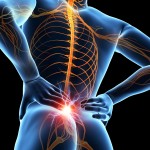 BACK PAIN
BACK PAIN
From the Rheumatologist point of view, back pain can be grouped into mechanical or inflammatory back pain.
What is mechanical back pain vs inflammatory back pain?
It is best described as a type of pain that improves with rest and massage, but worse with activity. On the contrary, inflammatory back pain gets worse with prolonged rest, but improves with mobility. Occasionally, the pain may be both mechanical and inflammatory. It may also be a red flag for an underlying disorder affecting the spine or its surrounding structures, or a manifestation of a disorder of the internal organs.
What is Spondyloarthritis?
It is a form of back pain that tends to occur in young patients below 45 years old. This is an auto-immune condition that affects close to 1% of the population. It results in inflammation of the sacroiliac joints and spine, causing persistent back pain and stiffness. It may be accompanied by aches and pains in the other joints such as the heels, knees, hips and wrists; skin rashes known as psoriasis; eye redness known as uveitis; and rarely inflammatory bowel diseases (IBD) such as ulcerative colitis or Crohn’s disease. If left untreated, this condition causes excessive fatigue and pain, and can significantly affects one’s quality of life and productivity. It can also result in irreversible deformity of the spine, affecting one’s ability to walk steadily or performing simple actions such turning their heads.
Any known trigger for SpA?
There is no known trigger for SpA, but patients with a family history of SpA or related illnesses such as psoriasis, uveitis or IBD, have a higher risk of developing this condition.
What can you expect with this condition?
Delayed diagnosis: Studies showed that this condition is usually diagnosed 5-7 years after symptom onset, by which time, joint damage or spinal fusion may have taken place.
What should you do if you suspect that you may suffering from SpA?
It’s important that you see a Rheumatologist early. Very often, patients attribute their back pain or stiffness to sporting activities, inappropriate mattresses or the carrying of excessive loads on their backs. Some patients self-medicate with pain killers while others learn to live with the chronic pain through adjustment of their daily lives.
Safe and effective medical therapy is currently available. Surgery is usually not required and is reserved for patients with severe joint damage. Apart from medical therapy, patients are also encouraged to attend physiotherapy sessions which help with their overall condition. Data from clinical studies have shown that early treatment provides good long term outcome for these patients.
